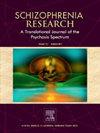Current progress in understanding schizophrenia using genomics and pluripotent stem cells: A meta-analytical overview
IF 3.6
2区 医学
Q1 PSYCHIATRY
引用次数: 0
Abstract
Schizophrenia (SCZ) is a complex, heritable and polygenic neuropsychiatric disease, which disables the patients as well as decreases their life expectancy and quality of life. Common and rare variants studies on SCZ subjects have provided >100 genomic loci that hold importance in the context of SCZ pathophysiology. Transcriptomic studies from clinical samples have informed about the differentially expressed genes (DEGs) and non-coding RNAs in SCZ patients. Despite these advancements, no causative genes for SCZ were found and hence SCZ is difficult to recapitulate in animal models. In the last decade, induced Pluripotent Stem Cells (iPSCs)-based models have helped in understanding the neural phenotypes of SCZ by studying patient iPSC-derived 2D neuronal cultures and 3D brain organoids. Here, we have aimed to provide a simplistic overview of the current progress and advancements after synthesizing the enormous literature on SCZ genetics and SCZ iPSC-based models. Although further understanding of SCZ genetics and pathophysiological mechanisms using these technological advancements is required, the recent approaches have allowed to delineate important cellular mechanisms and biological pathways affected in SCZ.
利用基因组学和多能干细胞了解精神分裂症的最新进展:荟萃分析综述。
精神分裂症(SCZ)是一种复杂的、可遗传的多基因神经精神疾病,它不仅使患者丧失能力,还降低了他们的预期寿命和生活质量。对 SCZ 患者进行的常见和罕见变异研究提供了超过 100 个基因组位点,这些位点在 SCZ 病理生理学方面具有重要意义。对临床样本进行的转录组学研究则揭示了SCZ患者的差异表达基因(DEGs)和非编码RNAs。尽管取得了这些进展,但仍未找到 SCZ 的致病基因,因此 SCZ 难以在动物模型中再现。在过去十年中,基于诱导多能干细胞(iPSCs)的模型通过研究患者iPSC衍生的二维神经元培养物和三维脑器官组织,帮助人们了解了SCZ的神经表型。在此,我们旨在综合有关 SCZ 遗传学和基于 SCZ iPSC 模型的大量文献后,对当前的进展和进步做一个简单的概述。虽然还需要利用这些技术进步进一步了解 SCZ 遗传学和病理生理学机制,但最近的研究方法已经能够描述 SCZ 重要的细胞机制和生物通路。
本文章由计算机程序翻译,如有差异,请以英文原文为准。
求助全文
约1分钟内获得全文
求助全文
来源期刊

Schizophrenia Research
医学-精神病学
CiteScore
7.50
自引率
8.90%
发文量
429
审稿时长
10.2 weeks
期刊介绍:
As official journal of the Schizophrenia International Research Society (SIRS) Schizophrenia Research is THE journal of choice for international researchers and clinicians to share their work with the global schizophrenia research community. More than 6000 institutes have online or print (or both) access to this journal - the largest specialist journal in the field, with the largest readership!
Schizophrenia Research''s time to first decision is as fast as 6 weeks and its publishing speed is as fast as 4 weeks until online publication (corrected proof/Article in Press) after acceptance and 14 weeks from acceptance until publication in a printed issue.
The journal publishes novel papers that really contribute to understanding the biology and treatment of schizophrenic disorders; Schizophrenia Research brings together biological, clinical and psychological research in order to stimulate the synthesis of findings from all disciplines involved in improving patient outcomes in schizophrenia.
 求助内容:
求助内容: 应助结果提醒方式:
应助结果提醒方式:


